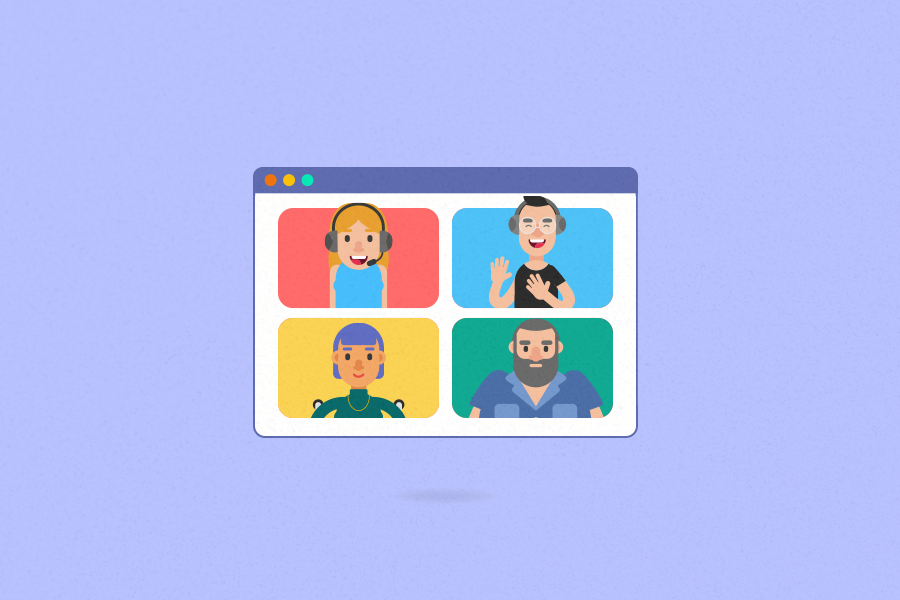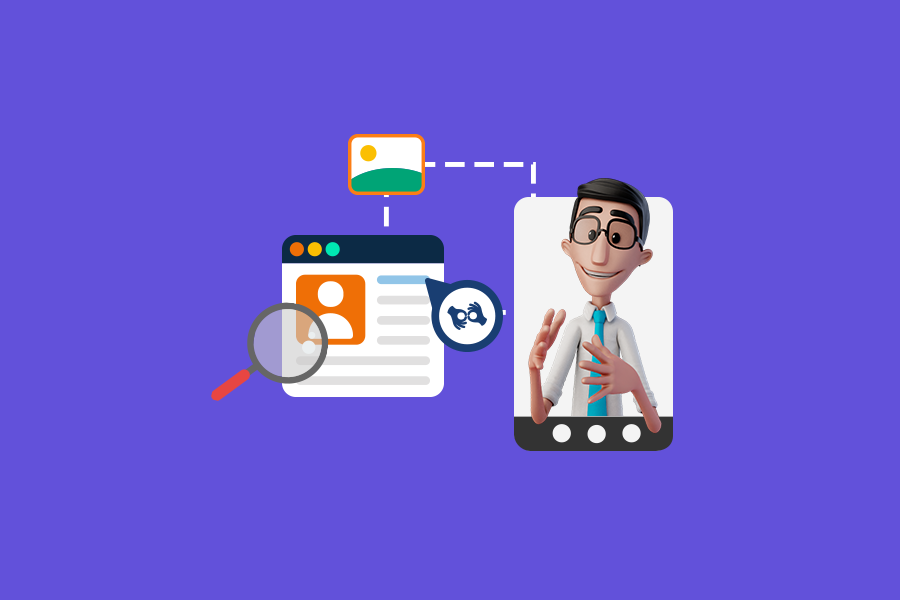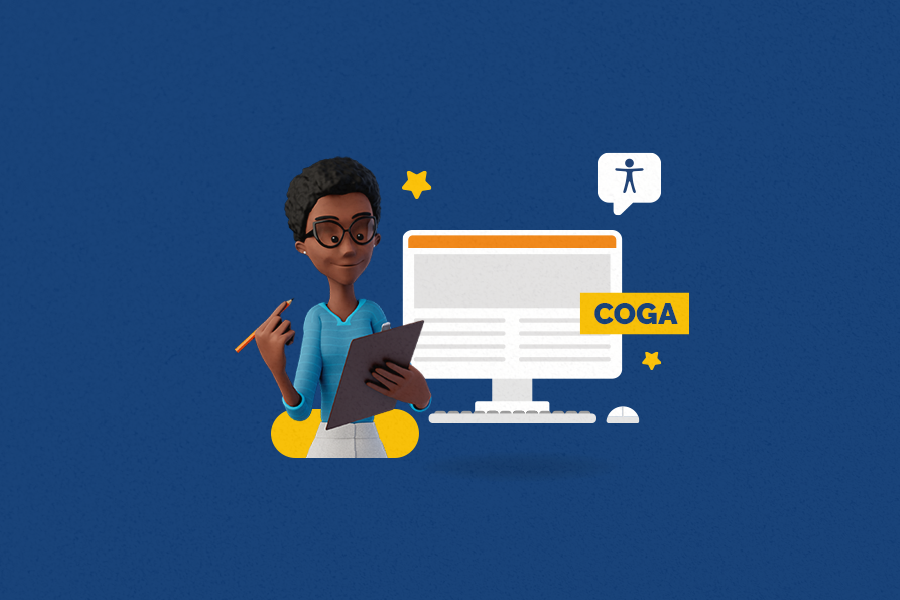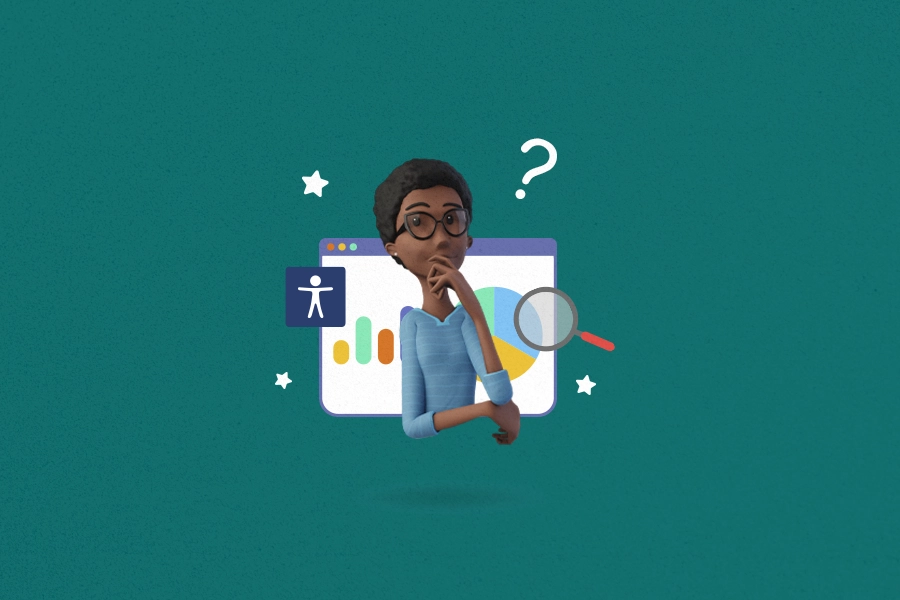
How to build a digital accessibility team

We have already mentioned multiple times over here that investing in digital accessibility is no longer a differentiator but a necessity. It benefits not only people with disabilities but also makes the online environment a fair and equitable place for different groups with varying needs.
Who is responsible for promoting web accessibility? The answer is simple! We can all do our part! Whether by adding alternative descriptions to our posts or captioning our videos, we are investing in inclusion and digital accessibility.
However, in a broader context, within the corporate world or large projects, it is necessary to have a specialised team on the subject. How to assemble a digital accessibility team? Follow along in this text and find out!
What does an accessibility analyst do?
An accessibility analyst is responsible for identifying, assessing, and resolving accessibility issues in digital products such as websites, applications, documents, and other web content. Their mission is to ensure that they comply with the standards and guidelines established to make the online world accessible, such as the WCAG (Web Content Accessibility Guidelines).
Among their main tasks are:
- Usability testing;
- Accessibility testing;
- Improvement recommendations;
- Documentation development;
- Project monitoring;
- Direct work with people with disabilities;
- Constant updates on the latest and recommended practices, as norms and technologies evolve all the time.
What types of digital accessibility professionals are there?
In addition to accessibility analysts, there are various other professionals working in this field, and here we list some of them:
- Lead Accessibility – responsible for defining and monitoring the technical and design standards of all company platforms;
- Accessibility Director – contributes to shaping accessibility best practices in the organization and the corporate world;
- Manager Accessibility Experience – their mission is to identify potential accessibility errors and propose solutions to resolve them;
- Chief Accessibility – person in charge of the vision, strategy, and execution of inclusive and accessible products;
- Product Manager Accessibility – responsible for the culture of accessibility within the organization;
- Accessibility Programs Director – develops and implements accessible programs;
- Change Coordinator Accessibility – coordinates the entire product accessibility process and guides specialist professionals;
- UX Research Accessibility – has a role similar to a UX Designer but focuses on the accessibility of the user experience;
- Digital Accessibility Manager – identifies the needs of people with disabilities and how they interact with their products;
- Process Manager Digital Accessibility – involved in the development processes of a product’s life cycle.
Important skills for accessibility professionals
Several skills are expected for accessibility professionals, mainly to ensure that digital products are accessible to as many people as possible. Let’s learn a bit about them:
1. Communication
This is a fundamental skill to develop strong relationships, work as a team, lead, influence, and achieve goals. It is important to remember that to achieve effective communication, it is necessary to practice active listening, empathetic understanding, clarity, and expressing ideas objectively.
2. Learning skills
A good accessibility professional must always be willing to develop the ability to learn, as this field is constantly changing. New guidelines, new standards, new processes, new technologies—the world changes all the time, requiring continuous updating.
3. Creativity
Anyone who thinks that professionals working with accessibility are only involved in evaluations, processes, and monitoring is mistaken. Creativity is crucial in this context, as thinking innovatively creates better digital products and solutions.
4. Critical thinking
This is a versatile and fundamental skill that can be applied in different contexts, from an objective analysis of information to decision-making or solving complex problems. It helps map risks and supports professionals in understanding the world more deeply and meaningfully.
5. Empathy
If the promotion of a more inclusive web is being discussed, it is only fair that the professional puts themselves in the shoes of those who will benefit from these accessible solutions. Thinking about the best usage formats and the best experience makes a total difference in creating digital products.
6. Flexibility
A professional who can easily adapt to different situations, changes, and challenges is a key person in an accessibility team. Flexibility is an important characteristic in an environment that is constantly evolving, especially when it comes to technology.
7. Time management
Managing time well makes us more productive and helps us achieve our goals effectively. This is no different for professionals working with accessibility. The more organized the time is, the more optimized the deliveries are. In a team with a high volume of demands, this skill is essential.
8. Proactivity
Being restless and always willing to solve problems, propose new ideas, and take responsibility is a valuable and highly valued skill in the workplace. To do this, one must have self-discipline and self-awareness. Proactive people usually stand out and achieve personal and professional success.
5 tips to build a digital accessibility team
After learning what accessibility professionals are made of, how about understanding how to effectively put them together in a team? Here are our 5 tips on how to build the best digital accessibility teams:
Set a budget
Having a defined budget for the team is an ongoing process that requires planning, monitoring, and constant adjustments. Ensuring that the determined budget aligns with the company’s objectives and that resources are invested in the best way is crucial.
Thinking about accessibility at the beginning of a project is much cheaper than applying it when it has already started, and this should be considered when designing costs. Regardless of investing at the beginning or in the middle of the project, the important thing is to invest in accessibility.
Consider the size of the company
Taking into account the size of the company can significantly influence the dynamics, resources, and requirements of an accessibility project. Keeping this in mind allows customizing the approach, methodology, processes, and communication to the organization’s context and the number of people who may be involved in this project.
Have people with disabilities on the team
Have you ever come across the motto “Nothing about us without us“? If a team is working on solutions that make the web accessible and inclusive to people with disabilities, it is necessary to involve these people in the discussion, planning, and creation of digital products or services.
They, more than anyone else, can say what their needs and major challenges are in the online universe. Thus, the work is more focused and objective on real demands, making it useful and effective.
Work on people’s development
Even if your team is not composed only of accessibility experts, technical skills and knowledge can be developed. Investing in training and constant updates for your team will not only benefit your projects and deliveries but will also boost the professional career of your team. The richer and more prepared it is, the better and more impactful the results will be.
Promote an accessibility culture in your company
The accessibility theme should be discussed beyond the team’s four walls; it needs to be part of the organizational culture. It is essential that everyone knows that accessibility goes beyond compliance with the law or regulatory requirements but brings significant benefits to society as a whole. It can also be seen as a business strategy and opportunity, as it increases the reach of the audience, but also as a social commitment.
Hire accessibility tools
If your organization does not have an accessibility team to create specific products and solutions, or if your team wants to improve accessibility projects within the company, rely on existing assistive technologies.
The Hand Talk Plugin can be an excellent starting point, as it translates website text content into Sign Languages, providing autonomy for a large portion of the population that communicates in this language.
Add-ons like reading mode, line spacing, font enlargement, and site reader improve the experience for different groups of people, such as individuals with visual disabilities, the elderly, people with learning difficulties, and neurodivergent individuals. It is a quality solution that makes a difference in the lives of millions of users.
Conclusion
Accessibility teams have been increasingly demanded within organizations as they play a crucial role in promoting a more inclusive world. In addition to creating assistive solutions or leading accessibility projects, they are also responsible for raising the issue and discussion of the topic within companies.


